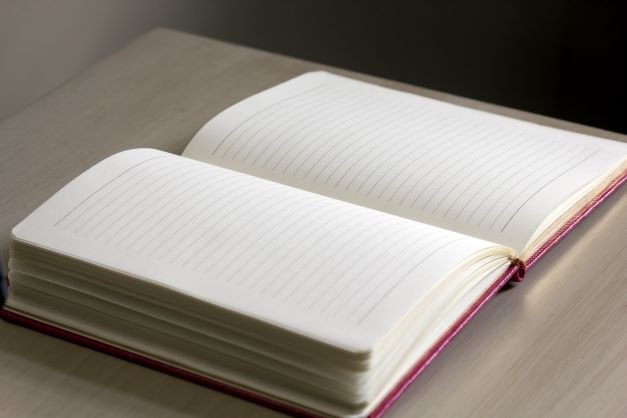"You can never be too passionate," E.R. Haas says in his little-known ebook "Think TQ and Grow Rich," (1) a not-so-subtle knock-off from one of the top-selling self-help books of all time by Napoleon Hill. "A life lived in moderation is not the stuff of stories told to grandchildren with a twinkle in your eye," Haas says in his plea for each of us to live a more passionate life.
Capturing stories to tell either in person or in memory is a complex topic and an even more challenging activity to put into practice. Over the past several weeks, I have continued my attempts to corral my old journal entries scattered across 60 years of notebooks, calendars, and digital daily note pages.
I recently wrote an article about the unintentional destruction of my daily notes journal in favor of a dual entry system containing my timeline bullet journaling entries and the more traditional journal entries, which I refer to as 'threads.' Short for 'discussion threads,' these entries contain the more conventional journal entries expounding my hopes, dreams, fears, frustrations, and, yes, passionate stories I hope my great-great grandchildren will read one day.
In truth, I've always considered myself to be an avid journalist. Not of the "I wrote an article for the Wall Street Journal" journalist but more of an "I walked the dog this morning" journalist. Remarkably, we do not have a word in the English language to describe a journaler, i.e., someone who keeps a journal; however, I have kept notes in one form or another since I was about five years old.
In 2007, I purchased a productivity educational series from E.R Haas' Nine to Five ScreenGems, Inc. (2), encouraging me to "periodically record my time and activities to review and improve the use of my time." The guidance was part of their "Optimize Factors" to implement into my business, and so on August 1, 2007, I recorded small entries during breaks in my day. The productivity enhancement was instantaneous, and my focus improved dramatically. I decided to keep the routine as an integral part of my journaling experience; however, I did not consider these short bursts of commentary to be a journal in the traditional sense of the word and referred to my notations as "timelining" or "timeline."
Later I would recognize these timeline entries as very similar to bullet journaling, and this past week was surprised to find a new term, "interstitial," floating around the Medium sphere. I like the word, although I had to look up its meaning and pronunciation, which tells me the title 'Interstitial Journaling' will probably not last; however, the concept will.
Like my timeline entries, the concept behind bullet or interstitial journaling is to capture "short bursts" (3) throughout the day as opposed to scores of handwritten pages in matching bound volumes captured during deep reflective sessions. My favorite description is put forth by Natan King that interstitial journaling is "done in the midst of the action, between your last activity and your next one." (4)
Entries such as 04:05, "Create Dashboard 'Snippet,'" and 10:07, "Break, take a short walk outside," are typical entries. Unfortunately, the admissions of "17:05, Complete database rebuild," and "19:04 Linda and I went out to dinner at that Hawaiian place again. Very good;" do not make for compelling reading, and I can't imagine posterity wanting to pour over volumes of such dribble.
Perhaps the most succinct explanation I've read of the benefits of this type of journaling was written by Jamie Todd Rubin, where daily notations become a "master index" to our lives. (5) Jamie references Jeff Huang's article "My productivity app is a never-ending .txt file," which Jeff updated in March 2022 to reflect the "14 years of todos recorded in text." As Jeff points out, it is a "to do list that turns into a what done list." (6) A single file. It allows search, links, URLs, and daily notations all in one place; incredible.
If you choose to participate in this type of journaling, whatever you call it, the notations will help you stay on task. (7) The short reflections clarify our commitment to the moment, heightening our attention and intention to the task. (8) I question this type of "mishmash of tasks, sentiments, outlines, and random ideas with timestamps." (9)
I continue to question the validity of this journaling technique beyond the clear benefits it provides the user as a productivity application; however, it certainly is ill-equipped to be exciting reading material and lively discussed stories told by grandchildren to future progeny.
Written February 13, 2023
Footnotes:
Think TQ and Grow Rich (https://thinktq.com/index.cfm)
https://thinktq.com/index.cfm
https://www.redgregory.com/notion/2021/6/23/how-to-implement-interstitial-journaling-in-notion
https://www.hopewalking.com/blog/interstitial-journaling
https://jamierubin.net/2022/01/25/practically-paperless-with-obsidian-episode-15-daily-notes-as-an-index-to-my-life/
https://jeffhuang.com/productivity_text_file/
https://www.lkhrs.com/blog/2022/08/interstitial-journaling/
https://www.hopewalking.com/blog/interstitial-journaling
Ibid

